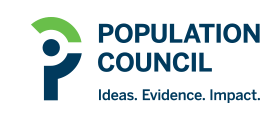Prevalence of low serum zinc concentrations in Indian children and adolescents: Findings from the Comprehensive National Nutrition Survey 2016–18
Document Type
Article (peer-reviewed)
Publication Date
4-8-2021
Abstract
Background: It is thought that there is a high risk of zinc deficiency in India, but there are no representative national estimates. Objectives: We aimed to evaluate the national and state-level prevalence of low serum zinc concentrations (SZCs) in Indian children from the nationally representative Comprehensive National Nutrition Survey. Methods: Prevalence of low SZC, adjusted for C-reactive protein, was estimated among preschool (1–4 y; n = 7874) and school-age children (5–9 y; n = 10,430) and adolescents (10–19 y; n = 10,140), using SZC cutoffs defined by the International Zinc Nutrition Consultative Group. Results: Prevalence of low SZC was high among adolescents (31.1%; 95% CI: 29.8%, 32.4%), compared with school-age (15.8%; 95% CI: 15.3%, 16.3%) or preschool children (17.4%; 95% CI: 16.7%, 18.0%). However, stratification of prevalence by fasting status or using an alternative lower SZC cutoff independent of fasting status led to a reduction in prevalence by 3.7% or 7.8% in children < 10 y, respectively. The prevalence of low SZC was higher among rural preschool children, those belonging to households with poor socioeconomic status, and those with severe stunting or underweight. Preschool children with diarrhea (22.6%; 95% CI: 20.8%, 24.4%), productive cough (22.7%; 95% CI: 18.5%, 27.5%), or malaria/dengue (38.5%; 95% CI: 29.4%, 48.2%) in the 2 wk preceding the survey had a higher prevalence of low SZC than those without morbidity (16.5%; 95% CI: 15.9%, 17.2%; 17.6%; 95% CI: 16.9%, 18.2%; and 17.5%; 95% CI: 16.8%, 18.1%, respectively). Conclusions: The national prevalence of low SZC among preschool (17%) or school-age children (16%) was < 20%, which is considered the cutoff indicating a problem of public health significance; but there were variations by state and socioeconomic status. In adolescents, however, the prevalence of low SZC was 31%, which warrants further investigation. The association of low SZC with diarrhea in preschool children necessitates better coverage of Zn administration in the management of diarrhea.
Recommended Citation
Pullakhandam, Raghu, Praween Kumar Agrawal, Rajini Peter, Santu Ghosh, G. Bhanuprakash Reddy, Bharati Kulkarni, Tinku Thomas, Anura V. Kurpad, Harshpal Singh Sachdev, Akash Porwal, Nizamuddin Khan, Sowmya Ramesh, Rajib Acharya, Avina Sarna, Umesh Kapil, Hemalatha Rajkumar, Arjan De Wagt, Sila Deb, and Robert Johnston. 2021. "Prevalence of low serum zinc concentrations in Indian children and adolescents: Findings from the Comprehensive National Nutrition Survey 2016–18," The American Journal of Clinical Nutrition 114(2): 638–648.
DOI
10.1093/ajcn/nqab066
Language
English
Project
India Comprehensive National Nutrition Survey

